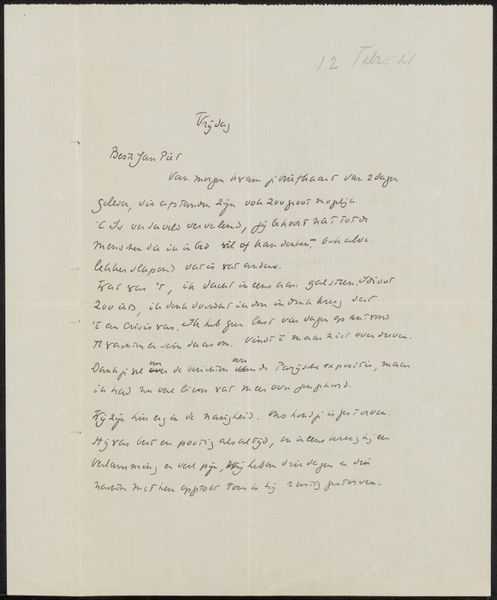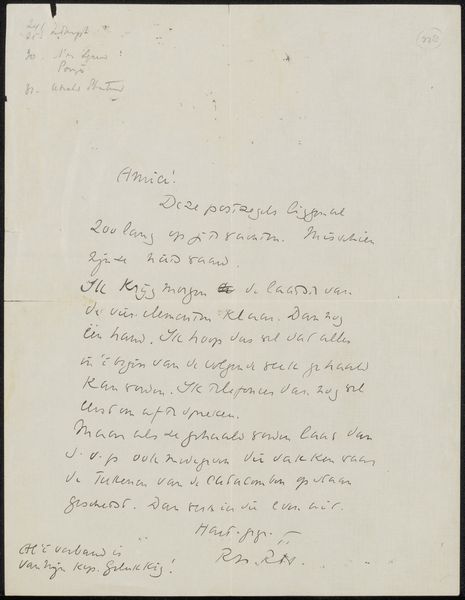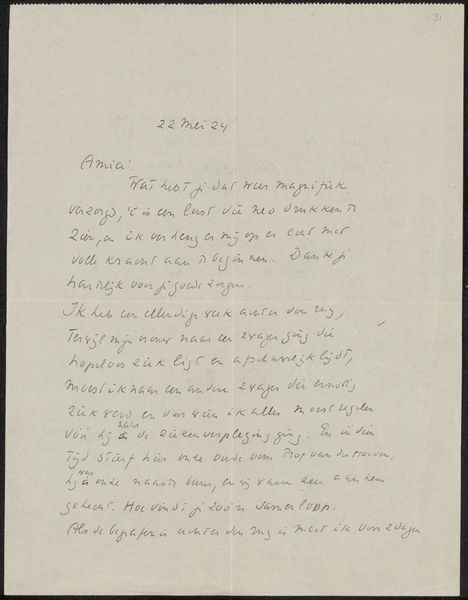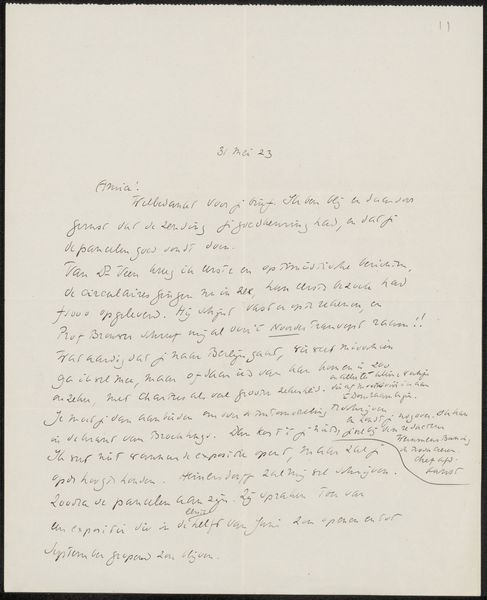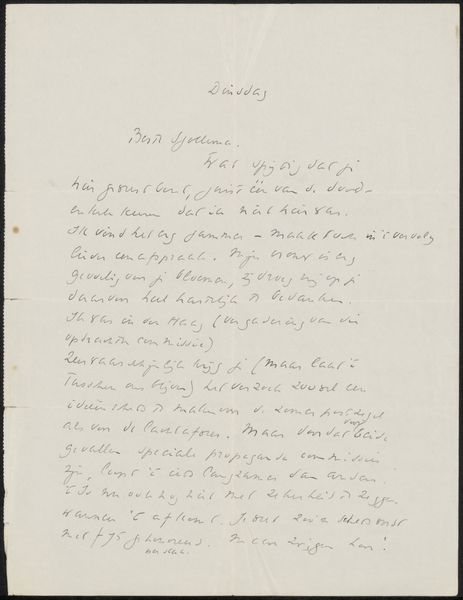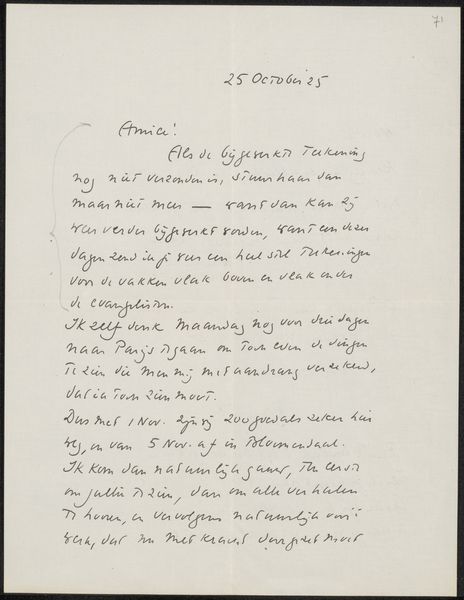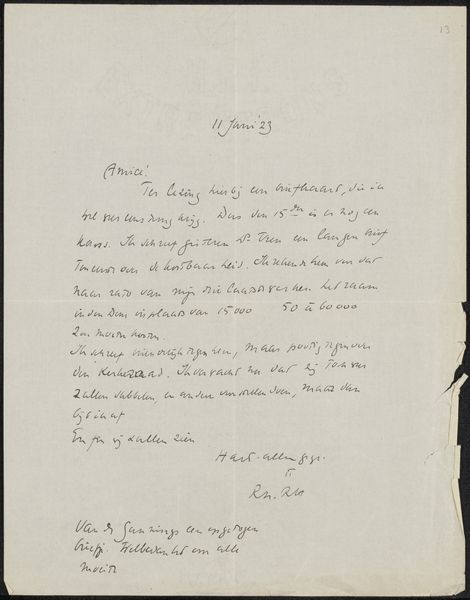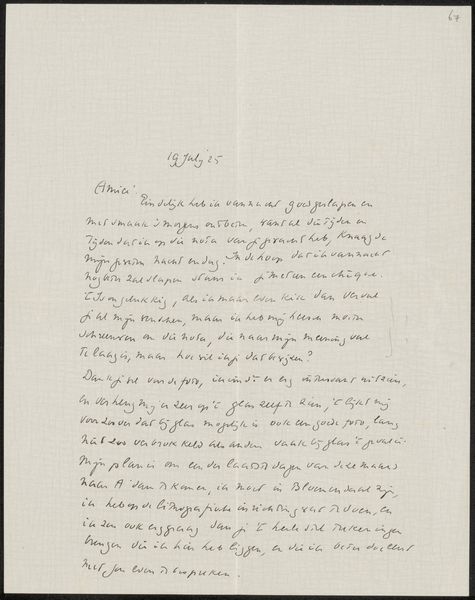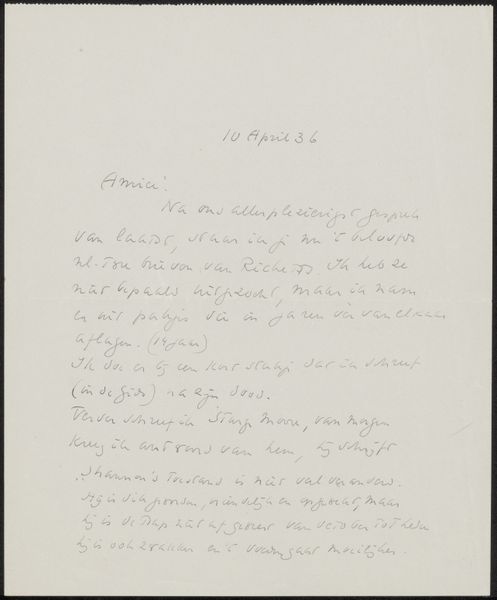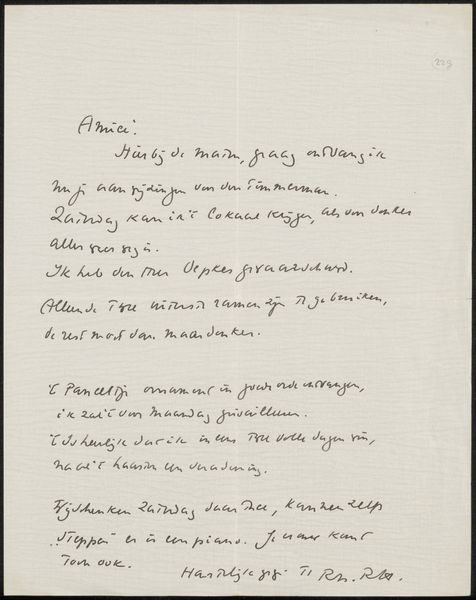
drawing, paper, ink, pen
#
drawing
#
ink paper printed
#
old engraving style
#
hand drawn type
#
paper
#
personal sketchbook
#
ink
#
hand-drawn typeface
#
pen-ink sketch
#
ink colored
#
pen work
#
sketchbook drawing
#
pen
#
sketchbook art
#
calligraphy
Copyright: Rijks Museum: Open Domain
Editor: Here we have Richard Nicolaüs Roland Holst's "Brief aan Willem Bogtman," created sometime between 1892 and 1938, made with pen and ink on paper. I'm struck by how intimate it feels, like stumbling across someone's private thoughts. What can you tell me about it? Curator: Consider the materials themselves: the cheapness of paper, the accessibility of ink. This wasn't some grand commission, but a humble letter, an artifact of daily labor and communication. What does the hand-drawn text suggest to you about its creation and audience? Editor: It feels very personal, definitely not something mass-produced. It makes me wonder about Holst's relationship with Willem Bogtman. Was this a casual correspondence, or something more involved? Curator: Precisely! Holst was deeply engaged with socialist ideals and the Arts and Crafts movement. A focus on handmade creation served as a direct rebuttal to industrial modes of production. How might the act of writing itself—laborious, time-consuming—become a form of resistance, a physical manifestation of his values? Editor: So the medium really is the message here. It’s interesting to consider the letter not just for its content, but for the conscious effort put into its production. Curator: Exactly. And consider the recipients of these letters: artisans and members of the cultural intelligentsia who likewise participate in a wider exchange about modes of artistic production. What does this letter tell us about the social networks within the Dutch art scene during that period? Editor: It highlights the value placed on individual craft. This has given me a new lens for analyzing similar pieces and understanding social interactions of that time! Curator: Indeed. Examining the materiality of this letter helps us to unearth how everyday acts, like writing, are linked to larger issues of labor, class, and artistic identity.
Comments
No comments
Be the first to comment and join the conversation on the ultimate creative platform.
